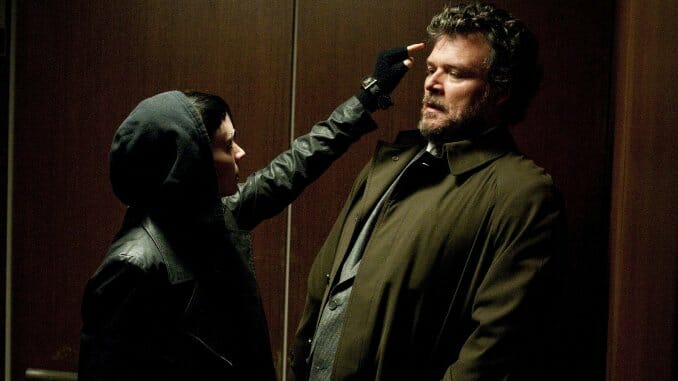The Girl with the Dragon Tattoo Remains David Fincher’s Most Underrated Film 10 Years Later

Over his long career, filmmaker David Fincher has been the mastermind behind many of the greatest thrillers to ever grace the silver screen. Characterized by their sleek, dark visuals and tense and unsettling atmospheres, his films explore twisted and gruesome stories in a careful and detailed manner. Sandwiched between his earlier forays in the genre—Se7en, Fight Club, Panic Room, and Zodiac—and his most recent crime works—Gone Girl and Mindhunter—The Girl with the Dragon Tattoo, which turns a decade old this week, remains his most underappreciated movie due to its brutal nature and heavy subject matter.
Adapted from the first installment of Stieg Larsson’s best-selling Swedish Millennium series, The Girl with the Dragon Tattoo centers on Mikael Blomkvist (played by Daniel Craig between James Bond duties), a recently disgraced journalist dealing with the fallout of a libel suit that destroyed his reputation and the publication he runs with longtime lover/business partner Erika (Robin Wright). When approached by wealthy industrialist Henrik Vanger (the late, great Christopher Plummer) to investigate the decades-old disappearance and presumed murder of his then-16-year-old grandniece Harriet in exchange for a healthy sum of money and, more importantly, information pertaining to the billionaire who destroyed Mikael’s career, he jumps at the chance in the hopes that it’ll be a win-win situation.
While we meet the titular girl with the dragon tattoo, Lisbeth Salander (Rooney Mara), within the first few minutes, it takes almost an hour for her narrative to join Mikael’s. The relentless antisocial punk hacker is recruited to aid Mikael in conducting research and gathering information for the investigation. Despite being wildly different people who exist in completely opposite worlds, Lisbeth and Mikael share a mission—uncovering a legacy of murders and bringing the killer who has spent decades undetected to justice—and their loneliness plays a role in ultimately bringing them together intimately.
Lisbeth is undeniably the film’s beating heart, largely due to Mara. She grants the heroine depth, conveying complex emotions in a subtle, vulnerable and humane way that doesn’t feel like a caricature. As opposed to being watered down to a bruised woman who needs saving, Mara’s performance is layered, as Salander appears to be guarded and icy at first glance but isn’t immune to actually feeling her emotions. Not only did she quietly convey standoffishness with a beating heart, but Mara physically transformed for the role, bleaching her eyebrows, chopping her hair off, changing her wardrobe and piercing her eyebrow, lip, nose, ears and nipple in order to better embody the character. A ward of the state, Lisbeth is threatened, abused and taken advantage of by those closest to her, namely her sadistic court-appointed guardian. Despite being an outsider shaped by trauma, Lisbeth learns how to cope and live with her struggles, never letting them overpower her and allowing her to tap into her thoughts and feelings at any given moment—and we see Mara go through all this. I wholeheartedly believe that Meryl Streep stole the Oscar from Mara at the 2012 Academy Awards.
Although the film is two-and-a-half hours long, Fincher never wastes a moment, creating a rich and fleshed-out adaptation that surprisingly never overstays its welcome. Using an unconventional five-act structure, no part of the story feels rushed. Steven Zaillian’s script allows us to get to know the core pair before the action begins, giving Fincher the room to explore every detail despite packing in so much. Kirk Baxter and Angus Wall’s editing helps transform Dragon Tattoo, which could’ve easily ended up being dense, into something fully absorbing: Seemingly mundane and unnecessary moments (like Lisbeth riding the subway or eating at McDonalds) become fully worth our attention. Balancing these with the stark setting, they build tension while also insisting that no detail is too small.
-

-

-

-

-

-

-

-

-

-

-

-

-

-

-

-

-

-

-

-

-

-

-

-

-

-

-

-

-

-

-

-

-

-

-

-

-

-

-

-








































